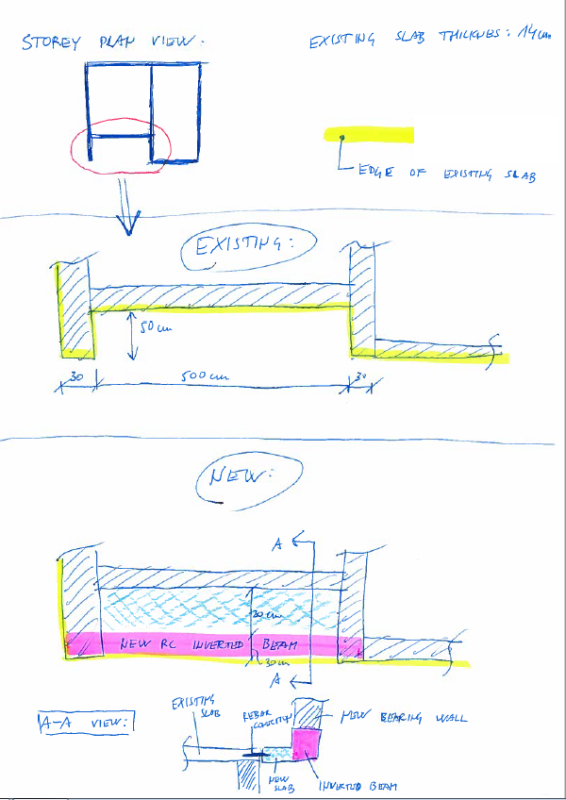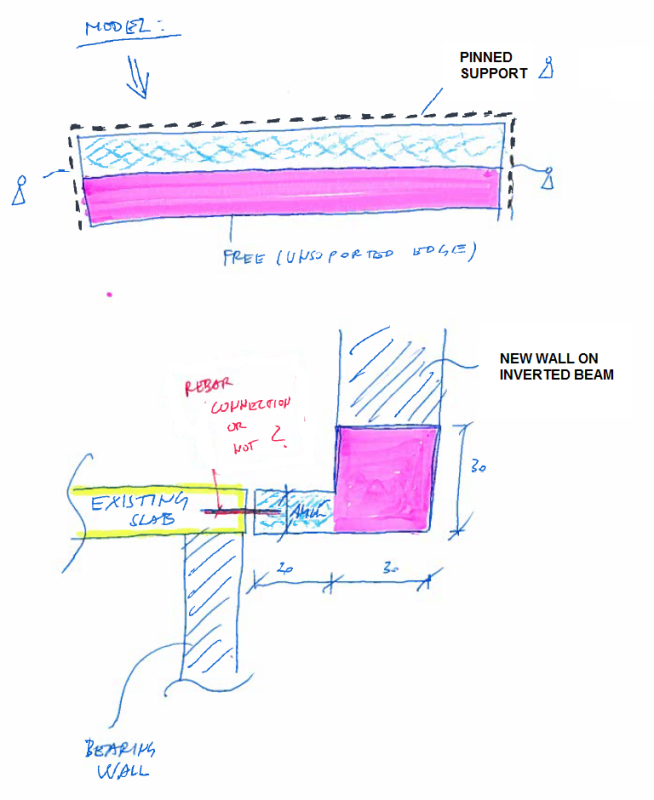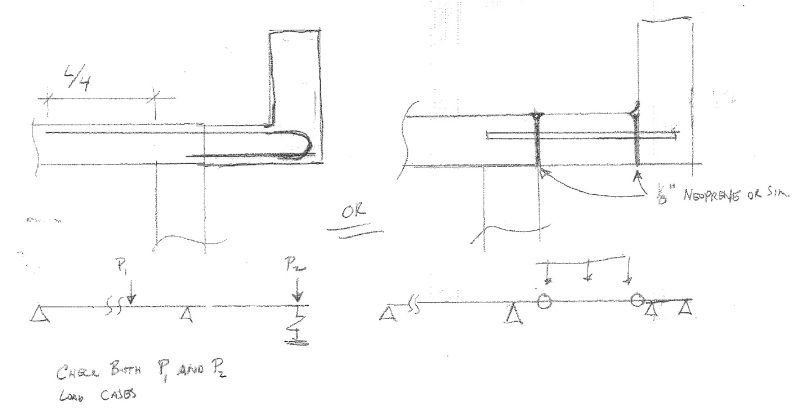Im dealing with a reconstruction.
English is not my 1st language so I think its best to see attached pictures.
Id like to add a new concrete slab + inverted beam to the existing slab.
Should I approach new slab + inverted beam as one element - "L beam"? But in that case i think I shouldnt make connection to the existing slab.
Im not sure how to model this and if I should connect new slab with existing slab.


English is not my 1st language so I think its best to see attached pictures.
Id like to add a new concrete slab + inverted beam to the existing slab.
Should I approach new slab + inverted beam as one element - "L beam"? But in that case i think I shouldnt make connection to the existing slab.
Im not sure how to model this and if I should connect new slab with existing slab.



